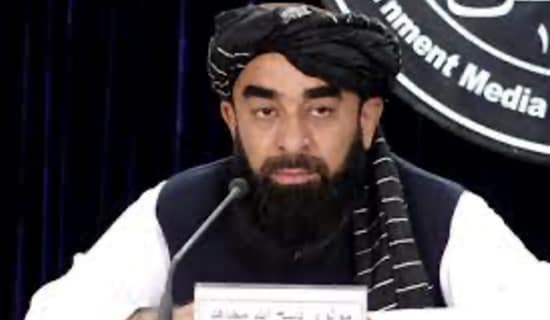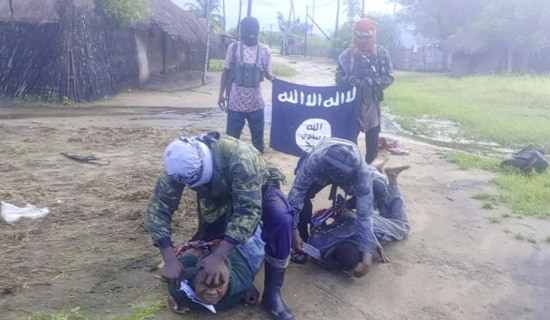Introduction
The March 26, 2015 attack by the Saudi-led coalition on the strongholds of Iran's proxy in Yemen, the Houthi, sent shockwaves through Tehran. The rousing of the Sunni Arab camp, and the formation of a fighting coalition, as well as the backing of the entire Arab League - all within the short space of a few weeks - took the Iranian regime completely by surprise.
In recent years, and especially in the last few months, Tehran has ratcheted up its direct involvement in several Arab countries, thanks to the silence on the part of the U.S.; this silence has been interpreted in the Arab world as support for Iran becoming a hegemonic military and political regional superpower. The Sunni Arab camp has appeared to be in a state of disintegration and division both politically and militarily, after nearly five years of internal erosion following the Arab Spring.
In this situation, official Iranian spokesmen had stepped up their threats against Saudi Arabia and the Gulf states,[1] as well as against the U.S. military. These threats were backed up by maneuvers conducted by naval, ground, and missile forces, and by advanced weaponry development.[2] Several Iranian officials spoke of Iran's control of four Middle East capitals and four seas.[3] A senior advisor to Iranian President Hassan Rohani, Ali Younesi, even declared that the Persian Empire was now revived.[4]
The surprise Sunni Arab move blocked Iran in Yemen, and is a warning sign of Sunni camp intentions to cut Iran back down to size and to let it know that it is no empire, as Younesi said, but rather a mere 10% of the Islamic world - the vast majority of which is Sunni.
The political and military echelons of Iran's leadership - Supreme Leader Khamenei, IRGC commander Jafari, and Basij commander Naqdi - from which many threats have emanated, have not yet responded. However, Foreign Minister Javad Zarif expressed willingness to cooperate and help promote comprehensive internal dialogue in Yemen, as his Houthi allies fell under Sunni coalition bombardment.
However, there were threatening declarations from Iran's pragmatic camp, specifically Hashemi Rafsanjani, filling the vacuum left by Supreme Leader Khamenei's failure to respond.[5] Rafsanjani expressed his outrage at the Saudi-Arab operation, but his threats were vague, due perhaps to his wish to avoid impacting the nuclear talks that are currently underway.
Significance And Implications
The Iran Nuclear Dossier
In light of the resurgence of the Sunni Arab camp, and its aim to set Iran back, Tehran can ill afford - now less than ever before - to sign away the deterrent of its military nuclear capabilities and global recognition of it as a threshold nuclear state.
Relations With The U.S. And The U.S.-Iran Nuclear Agreement
The U.S.'s immediate and public show of support for the Sunni camp is a harsh blow for both Khamenei's ideological camp and for the pragmatic camp of Rafsanjani and Rohani. The ideological camp believes that it has successfully forced its position on the U.S., and Tehran seems to have dictated its demand for regional hegemony to it.[6] However, the American show of support for the Sunni coalition has reshuffled the Iranian deck, and could cement the Iranians' belief that the U.S. can never be trusted and that Tehran must obtain all of its demands, such as a complete lifting of the sanctions as a condition for its signing a nuclear agreement.
Two Models For Tehran's Political And Military Conduct
Two distinct models characterize Tehran's geopolitical and military conduct vis-à-vis its rivals in the region and internationally:
1. The "Intimidating Bully" model - Used vis-à-vis the U.S. The latter has been forgiving and sympathetic to the Iranian regime's demands and to its expansion in the region, in addition to seeing it as a partner in its strategic interests, such as the fight against ISIS - despite Iran's international terrorist activity. The U.S. has even shown willingness to grant Tehran limited nuclear status despite its violations of Security Council resolutions and IAEA regulations. Iran has continued its military and political expansion in the region alongside its ongoing issuing of threats, even against the U.S. military.[7] It has become clear that the U.S.'s sympathetic stance has neither softened nor curbed Iran's offensive activity in the region, but has only encouraged its hostile policy.
2. The "Paper Tiger" model - Faced with the empowered military and political Sunni Arab bloc, which is stronger than Iran, the Iranian regime could back down, revealing itself again as a paper tiger. This model has come into play twice, with Iran hesitating to implement its threats: first in 2003, when the U.S. besieged Iran from the south (Iraq) and the east (Afghanistan), and again in Bahrain in 2011, when a pro-Iranian Shi'ite coup was thwarted by a show of Saudi-Gulf military might.
* A. Savyon is Director of the MEMRI Iranian Media Project; Y. Carmon is President and Founder of MEMRI.
[1] See MEMRI Inquiry & Analysis Series Report No. 1144, Tehran Threatens Saudi Arabia; Khamenei: Iran Will Answer Saudi Arabia 'A Blow With A Blow', February 10, 2015; MEMRI Special Dispatch No. 5918, IRGC Weekly To Saudis: 'Iran Has Many Options For Harming Saudi Arabia... All [It] Needs To Do Is Use A Single One Of [Them] So That Nothing Remains Of The Entity Named The Aal-Saud Regime Or Of Saudi Arabia Itself', December 31, 2014; MEMRI Special Dispatch No. 5877, Iranian Campaign Touts IRGC Qods Force Commander Qassem Soleimani As 'Savior Of Iraq'; Soleimani: Iran Has Thousands Of Organizations Like Hizbullah; I Pray To Die A Martyr, November 10, 2014; MEMRI Special Dispatch No. 5858, Associates Of Iranian Supreme Leader Khamenei: Saudi Arabia Is The Source Of Scheming Against The Islamic World; The Al-Saud Family Is Of Jewish Origin - And Its Turn To Fall Has Come, October 14, 2014; and MEMRI Special Dispatch No. 5848, Iranian Media Reports Deleted Following Publication (1): Senior IRGC Official Speaking On Iran's Military Involvement In Syria Says Iran Has Established 'Second Hizbullah' There, September 25, 2014.
[2] See MEMRI Special Dispatch No. 6004, Iran Escalates Naval Threats Against U.S. In Persian Gulf, March 24, 2015; MEMRI Special Dispatch No. 5996, Iranian Leader Khamenei: A Society Steeped In The Spirit Of Martyrdom Is Unstoppable; Khamenei's Representative In IRGC Qods Force: We Shall Not Rest Until We Raise Flag Of Islam Over The White House, March 17, 2015; MEMRI Special Dispatch No. 5974, Revolution Day 2015 In Iran: A Regime-Organized Display Of Hatred For U.S., Obama, February 24, 2015; MEMRI Inquiry & Analysis Series Report No. 1135, Iranian IRGC Missile Unit Commanders: We've Developed 2,000-km Range Missiles And Equipped Hizbullah With 300-km Range Missiles; Fars News Agency: Israel's Illusions About Its Natural Gas Fields Will Be Buried In The Mediterranean, December 4, 2014; MEMRI Special Dispatch No. 5742, IRGC Naval Commander: Iran Can Destroy The U.S. Navy With Suicide Operations, Missiles, And Speedboats; 'When The Hoot Missile Hits The Americans, [They] Will See Which Units Fired It', May 15, 2014; MEMRI Special Dispatch No. 5674, Iranian Military Receives New Ballistic Missiles, Official Threatens The U.S., March 11, 2014; and MEMRI Special Dispatch No. 5661, On Iranian Revolution Day 2014, Commander of IRGC Navy Says: The Americans Will Understand When Their Warships With Over 5,000 Crew Aboard Sink To The Depths Of The Sea And They Have To Search For Their Bodies, February 27, 2014.
[3] See MEMRI TV Clip #4530 - Iranian Analyst Mohammad Sadeq Al-Hosseini: Saudi Arabia Is on the Verge of Extinction; We Are the New Sultans of the Mediterranean, the Gulf, and the Red Sea, September 24, 2014. In a September 24, 2014 interview with Mayadeen TV, which is close to Hizbullah, Mohammad Sadeq Al-Hosseini said, "The Saudi ruler represents a tribe on the verge of extinction" and "a third world war has begun." He added, "We in Tehran, Damascus, [Hizbullah's] southern suburb of Beirut, Baghdad, and Sana'a will shape the map of the region." See MEMRI Special Dispatch No. 5858, Associates Of Iranian Supreme Leader Khamenei: Saudi Arabia Is The Source Of Scheming Against The Islamic World; The Al-Saud Family Is Of Jewish Origin - And Its Turn To Fall Has Come, October 14, 2014.
[4] See MEMRI Special Dispatch No. 5991, Advisor To Iranian President Rohani: Iran Is An Empire, Iraq Is Our Capital; We Will Defend All The Peoples Of The Region; Iranian Islam Is Pure Islam - Devoid Of Arabism, Racism, Nationalism, March 9, 2015.
[5] See MEMRI Special Dispatch No. 6008, Immediate Iranian Reaction To Sunni Arab Military Campaign To Push Back Shi'ite Expansion: Calls For Houthis To Attack Saudi Oil Wells And Tankers, Operate In Saudi Territory And Straits Of Bab Al-Mandeb And Hormuz, March 26, 2015.
[6] See MEMRI Special Dispatch No. 5996, Iranian Leader Khamenei: A Society Steeped In The Spirit Of Martyrdom Is Unstoppable; Khamenei's Representative In IRGC Qods Force: We Shall Not Rest Until We Raise Flag Of Islam Over The White House, March 17, 2015; and MEMRI Inquiry & Analysis Series Report No. 1127, Iran's Pragmatic Camp Calls For Exploiting Obama's Weakness To Attain Comprehensive Nuclear Agreement On Tehran's Terms, October 26, 2014.
[7] See MEMRI TV Clip #4838 - Iranian Leader Khamenei: Death to America; Obama Is Trying to Turn Our People against the Regime, March 21, 2015; MEMRI Inquiry & Analysis Series Report No. 1132, Khamenei Camp In Indirect Response To Obama Letter, On Anniversary Of U.S. Embassy Takeover: 'America Is Still The Great Satan And The No. 1 Enemy' Of Iran, November 16, 2014; and MEMRI Special Dispatch No. 5728, Tehran Friday Sermon: The Iranian President Should Punch Obama In The Mouth When He Talks Nonsense, May 2, 2014.





